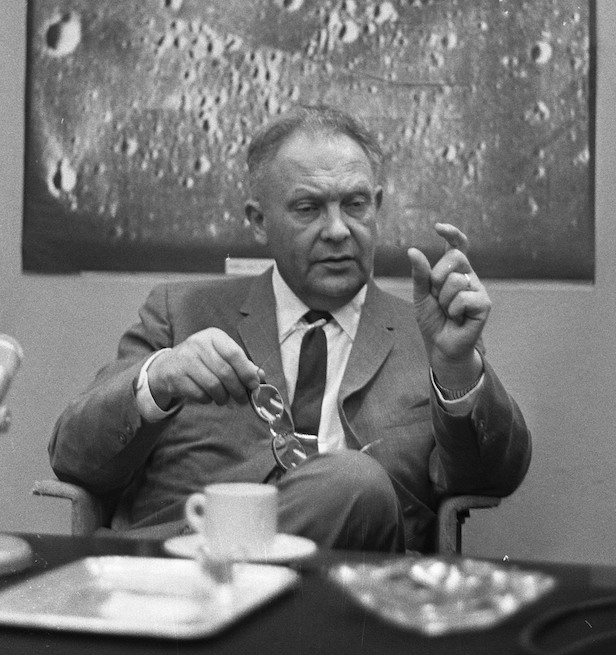Heroes of Space: Gerard Kuiper
This determined astronomer changed our understanding of the Solar System

Kuiper is best known as the eponym for the ‘Kuiper Belt’. Image credit: Gelderen, Hugo van / Anefo
Growing up as a village boy in northern Holland, Gerard Kuiper eventually ended up as arguably one of the fathers of modern planetary science. The American-Dutch astronomer has many achievements to his name. The most literal and notable of these achievements is the proposal of the ‘Kuiper Belt’ – named after him upon discovery. Although he’s best known for his belt, he also discovered and predicted many aspects of our Solar System that altered the planetary sciences.
He was born in Tuitjenhorn, Holland on 7 December 1905, the son of a tailor. He possessed extraordinary sight – Kuiper could apparently decipher the stars to a magnitude of 7.5! This is something that could have ignited his love of astronomy, seeing more stars than anyone else and wanting to see even more. Kuiper eventually went on to gain a Bachelor of Science degree in Astronomy from Leiden University in 1927, followed by a doctoral thesis on binary stars in 1933.
This began a fruitful career for Kuiper, who worked for many observatories, beginning with the Lick Observatory. Following Lick was Harvard College Observatory, and then Yerkes Observatory, where he initiated the Yerkes-McDonald asteroid survey (19501952). All this experience and passion culminated in a determined astronomer dedicated to understanding the planetary science of our Solar System. This led to revolutionary discoveries and theories about our Solar System, such as the discovery of Uranus’ moon Miranda, the correct prediction that carbon dioxide is a major component of Mars’ atmosphere, and again correctly predicting that Saturn’s rings are made up of ice. This further led to him discovering Neptune’s irregular moon Nereid in 1949, as well as proposing a promising theory of the origin of the planets – he suspected that a large cloud of gas around the Sun eventually condensed into the worlds of Solar System.
In 1951, Kuiper made his most famous proposal: that beyond the orbit of Neptune is a disk-shaped region filled with copious amounts of minor planets which would wander into the inner Solar System, creating comets. This region has henceforth been known as the ‘Kuiper Belt’, but it wasn’t actually proven until 1992 when the first Kuiper Belt Object (KBO) was observed.
He went on to suggest that Mars’ poles weren’t frozen carbon dioxide, and they were, in fact, frozen water in 1956. In the 1960s, Kuiper was also involved in the Apollo missions, helping to identify potential safe landing sites. Without even stepping on the Moon, he predicted the surface felt like walking on ‘crunchy snow’. The astronaut Neil Armstrong then proved this when he became the first man to walk on the lunar surface back in 1969.
Kuiper was known to many as a man that demanded a lot of his workers, colleagues and himself. He also showed a warm-hearted side which made him popular. He eventually went into teaching, with one of his students being American astronomer Carl Sagan. Unfortunately, Gerard Kuiper passed away on the 23 December, 1973 due to a heart attack while on holiday with his wife, Sarah Fuller, in Mexico. Kuiper left behind a strong legacy of honours and accomplishments, progressing our understanding of planetary science.
Keep up to date with the latest news in All About Space – available every month for just £4.99. Alternatively you can subscribe here for a fraction of the price!




